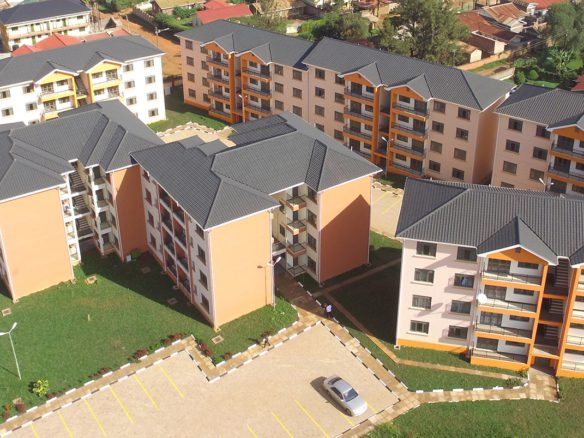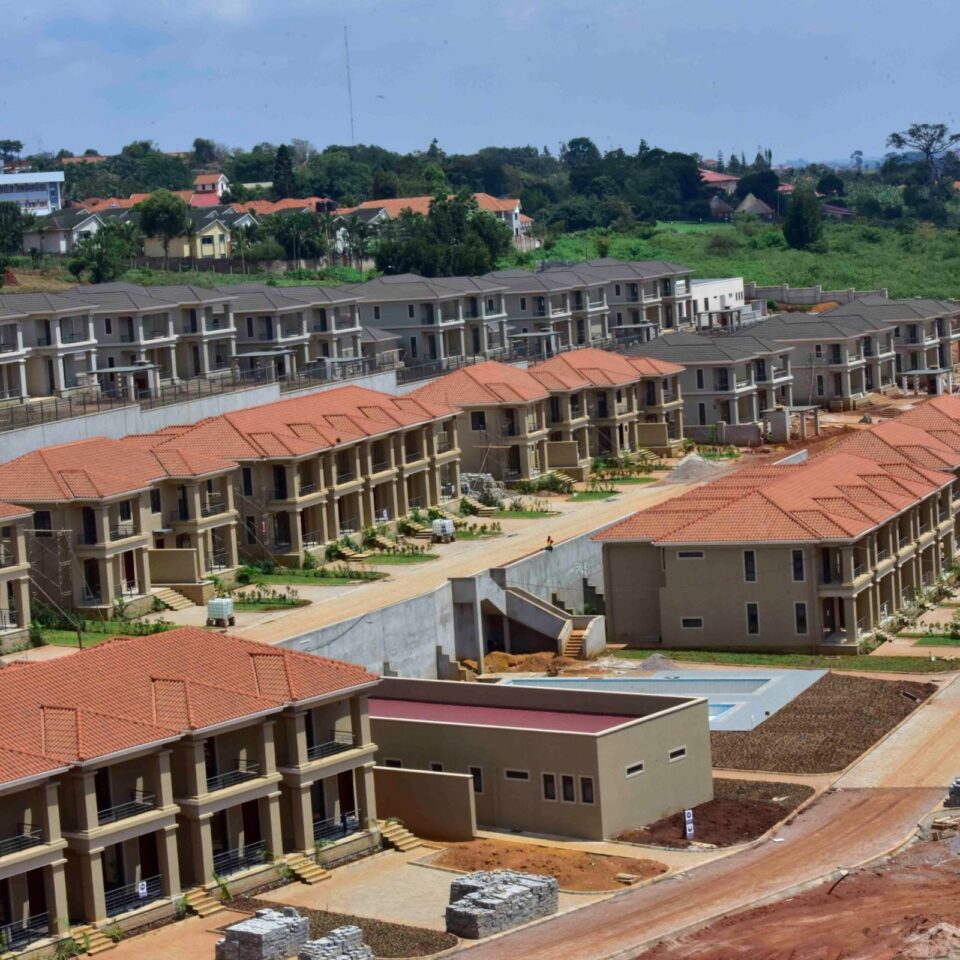In the early 1960s, Uganda was a newly independent nation with a burgeoning population and an urgent need for modern housing. Recognizing the importance of providing adequate shelter for its citizens, the Ugandan government took a significant step in 1964 by establishing the National Housing Corporation (NHC). The primary mission of this state-owned enterprise was to address the housing shortage, particularly in urban areas, and to promote the development of affordable and quality housing.
Early Efforts and Challenges
The initial years of NHC were marked by ambitious projects and a spirit of optimism. The corporation embarked on constructing residential estates in Kampala and other major towns. These early developments, such as Bugolobi Flats and Wandegeya Flats, became iconic symbols of Uganda’s modernization efforts. However, the path was not without obstacles. The political turbulence of the 1970s, including the regime of Idi Amin, brought significant challenges. Economic mismanagement and civil strife hindered progress, and many projects were left incomplete or fell into disrepair.
Rebirth and Transformation
The 1980s and 1990s marked a period of rebuilding and transformation for Uganda, and the NHC was no exception. In 2002, the corporation was rebranded as the National Housing and Construction Company Limited (NHCCL), reflecting a broader mandate that included both housing development and construction services. With this renewed focus, NHCCL began to revitalize its operations.
The government, recognizing the critical role of housing in national development, initiated reforms to attract private sector participation and investment. Public-private partnerships became a key strategy, allowing NHCCL to leverage additional resources and expertise.
Landmark Projects and Modernization

In the 21st century, NHCCL undertook several landmark projects that have reshaped the urban landscape of Uganda. Notable among these is the Naalya Housing Estate, a sprawling residential development in Kampala that has provided homes for thousands of families. This project set a new standard for modern, planned communities in Uganda.
Another significant achievement was the construction of the Namungoona and Lubowa housing estates, which catered to a growing middle class and addressed the need for upscale residential options. These projects demonstrated NHCCL’s ability to adapt to market demands and contribute to the diverse housing needs of Ugandans.
Challenges and Innovations
Despite these successes, NHCCL has faced ongoing challenges. Rapid urbanization, a growing population, and economic pressures have necessitated continuous innovation and adaptation. The company has embraced sustainable building practices, incorporating eco-friendly materials and energy-efficient designs to address environmental concerns
In recent years, NHCCL has also explored new financing models to make homeownership more accessible. Collaborations with financial institutions have led to the introduction of mortgage schemes and flexible payment plans, enabling more Ugandans to achieve their dream of owning a home.
The Road Ahead

As Uganda continues to develop, the role of NHCCL remains as crucial as ever. The company is poised to expand its footprint, with plans for new residential and commercial projects in various regions of the country. The vision for the future includes smart cities, integrated communities, and innovative construction technologies that will set new benchmarks for the housing sector.
NHCCL’s journey from its inception in 1964 to its current status as a leading player in Uganda’s housing and construction industry is a testament to resilience, adaptation, and a steadfast commitment to national development. The story of National Housing and Construction Company Uganda is not just about buildings and infrastructure; it is about building a nation, one home at a time.
National housing refers to policies, programs, and initiatives implemented by a government to ensure that its citizens have access to adequate, affordable, and secure housing. These efforts can vary widely from country to country but generally aim to address issues such as homelessness, housing affordability, and housing quality. Key aspects of national housing initiatives often include:
Affordable Housing Programs: Governments may provide subsidies, grants, or tax incentives to encourage the construction and maintenance of affordable housing units. These programs aim to make housing more accessible to low- and middle-income families.
Public Housing: Public housing refers to government-owned housing units provided at reduced rents to low-income families, seniors, and people with disabilities. These units are typically managed by public housing authorities.
Housing Finance Assistance: This includes measures to help individuals and families finance the purchase or renovation of homes. It may involve mortgage assistance programs, low-interest loans, and down payment assistance.
Rent Control and Tenant Protections: Some governments implement rent control measures to limit rent increases and protect tenants from eviction without just cause. Tenant protection laws may also include rights to repair and maintenance, protection against discrimination, and assistance for displaced tenants.
Homelessness Prevention and Support: National housing policies often include programs aimed at preventing homelessness and providing support services to those experiencing homelessness. This can involve emergency shelters, transitional housing, and permanent supportive housing.
Urban Development and Renewal: Governments may invest in the revitalization of urban areas, aiming to improve living conditions and stimulate economic growth. This can involve renovating existing housing, developing new housing projects, and improving infrastructure.
Regulations and Standards: National housing policies often establish building codes and standards to ensure that housing is safe, healthy, and environmentally sustainable. This includes regulations on construction quality, energy efficiency, and accessibility.
Housing Market Stability: Measures to stabilize the housing market can include regulating lending practices, monitoring housing market trends, and intervening to prevent housing bubbles.
Support for Special Populations: Some national housing policies focus on providing support for specific groups, such as veterans, seniors, people with disabilities, and victims of domestic violence. This can include tailored housing solutions and support services.
National housing policies are crucial for ensuring that all citizens have access to safe, affordable, and decent housing, which is a fundamental human right. The specific strategies and programs can vary widely based on the country’s economic conditions, political landscape, and housing needs.
National Housing and Construction Company (NHCC) in Uganda plays a significant role in benefiting the community in several ways:
Affordable Housing: NHCC provides affordable housing options, making it possible for more people, including those with lower incomes, to own or rent homes. This helps in reducing homelessness and improving living standards.
Urban Development: By constructing residential and commercial buildings, NHCC contributes to the development and modernization of urban areas. This includes the creation of infrastructure like roads, water supply, and electricity, which are essential for community growth.
Employment Opportunities: NHCC projects create numerous job opportunities for locals, from construction workers to administrative staff, thereby reducing unemployment and boosting the local economy.
Economic Growth: The housing sector is a significant driver of economic growth. NHCC’s activities stimulate related industries such as construction materials, furniture, and home appliances, contributing to the overall economic development of Uganda.
Community Services: Many NHCC housing projects include community amenities such as schools, hospitals, and recreational facilities. These services enhance the quality of life for residents and promote a sense of community.
Investment Opportunities: NHCC developments attract both local and foreign investors, fostering economic development and encouraging further investments in the country.
Environmental Sustainability: NHCC incorporates sustainable building practices in their projects, promoting eco-friendly construction methods and energy-efficient homes, which help in reducing the environmental impact.
Social Stability: By providing stable housing, NHCC helps in fostering social stability. When people have secure homes, they are more likely to engage positively in community activities and contribute to societal well-being.
Overall, National Housing and Construction Company Uganda significantly contributes to community development, economic growth, and social well-being through its various housing and construction projects.
National housing plans are typically established through a combination of government policy, economic planning, demographic analysis, and stakeholder engagement. Here’s a general overview of how national housing plans are developed:
Government Policy and Objectives: The government sets the overarching goals for national housing, such as increasing affordable housing, reducing homelessness, or improving housing quality. These goals are often outlined in policy documents and legislative framework
Needs Assessment: Authorities conduct a comprehensive assessment of housing needs across different regions. This involves analyzing demographic data, population growth trends, and housing market conditions to identify gaps and forecast future housing demands.
Stakeholder Engagement: Engaging with a wide range of stakeholders, including local governments, developers, financial institutions, and community organizations, is crucial. These stakeholders provide valuable input and help ensure that the housing plans are feasible and address the needs of diverse communities.
Economic and Financial Planning: Detailed financial planning is essential to ensure that there are adequate funds for housing projects. This includes budgeting for construction costs, infrastructure development, subsidies, and other financial incentives to encourage private sector participation.
Land Use and Zoning Regulations: Effective land use planning and zoning regulations are established to guide the development of housing projects. This ensures that housing developments are strategically located, environmentally sustainable, and integrated with necessary infrastructure like roads, schools, and healthcare facilities.
Implementation Strategies: Specific strategies are developed to implement the housing plans. This might include public-private partnerships, incentives for developers, streamlined approval processes, and targeted programs for vulnerable populations.
Monitoring and Evaluation: Once the plans are implemented, continuous monitoring and evaluation are necessary to assess progress and make adjustments as needed. This helps ensure that the housing goals are being met and allows for the identification and resolution of any issues that arise.
Community Involvement: Ongoing community involvement ensures that the housing developments meet the needs of the residents and fosters a sense of ownership and community engagement.
By integrating these elements, national housing plans aim to create a sustainable, inclusive, and well-planned housing environment that meets the needs of the population.
In the heart of East Africa, there lay a nation of unparalleled beauty and resilience: Uganda. Known for its lush landscapes and vibrant culture, Uganda was also a land of ambitious dreams and industrious people. Among its many treasures was a state-owned company called National Housing and Construction Company (NHCC), which held a special place in the hearts of Ugandans.
NHCC had a storied history. Founded in the post-independence era, it was established to address the nation’s pressing need for affordable and quality housing. The government, recognizing the importance of providing shelter for its citizens, had invested heavily in this venture. Over the decades, NHCC had grown from a modest initiative into a formidable entity, playing a pivotal role in shaping Uganda’s urban landscape.
The company’s headquarters was situated in the bustling capital city of Kampala. Here, a dedicated team of architects, engineers, and urban planners worked tirelessly to bring to life the dreams of countless Ugandans. They designed and constructed residential estates, apartment complexes, and commercial buildings, ensuring that every project met the highest standards of quality and sustainability.
Despite the rapid changes and modernization sweeping across Uganda, NHCC remained steadfastly committed to its mission. It was not just a company but a symbol of national pride and self-reliance. The government, recognizing the strategic importance of NHCC, ensured that it remained state-owned. This decision was rooted in the belief that housing was a fundamental right and that the state had a crucial role to play in providing for its people.
Over the years, there were occasional whispers of privatization. Some argued that private ownership could bring in fresh capital and innovative management practices. However, the majority of Ugandans held a deep-seated belief that NHCC should remain under state control. They saw it as a guardian of their collective aspirations and a testament to what the nation could achieve through unity and determination.
In villages and cities alike, NHCC’s projects were more than just buildings; they were communities. They provided homes for families, spaces for businesses to thrive, and landmarks that stood as symbols of progress. Through initiatives like the construction of affordable housing units and slum upgrading programs, NHCC helped uplift the underprivileged and fostered a sense of belonging and hope.
As Uganda continued to stride confidently into the future, NHCC adapted to new challenges and opportunities. It embraced green building technologies, promoted inclusive urban development, and collaborated with international partners to learn and innovate. Yet, amidst all this growth and transformation, one thing remained constant: NHCC was, and would always be, a proud state-owned enterprise.

The story of NHCC was not just about bricks and mortar but about dreams realized and futures secured. It was a testament to Uganda’s enduring commitment to its people’s welfare. And so, as the sun set over the rolling hills and shimmering lakes of Uganda, the nation took pride in knowing that National Housing and Construction Company stood strong as a beacon of hope and progress, wholly owned by the state, serving every Ugandan with unwavering dedication.
National housing, referring to government-subsidized or government-provided housing, is typically not sold on the open market. These housing units are usually meant to provide affordable living options for lower-income individuals and families. The specifics can vary by country and region, but generally, the government retains ownership of such properties to ensure they remain available to those in need.
However, there can be exceptions. In some countries, there are programs that allow tenants of national or public housing to purchase their homes after meeting certain criteria. For example, the “Right to Buy” program in the United Kingdom allows tenants in council housing to purchase their homes at a discounted rate.





1 comment
I truly appreciated going through this article! Your perspective are right on target and extremely useful
for those of us in the construction sector. It’s always a great thing to
come across in-depth content that targets the opportunities we deal with today.
I’ll be linking to this on my site about home construction,
as I am sure my readers will find value in it as much
as I did. Thanks for sharing this!